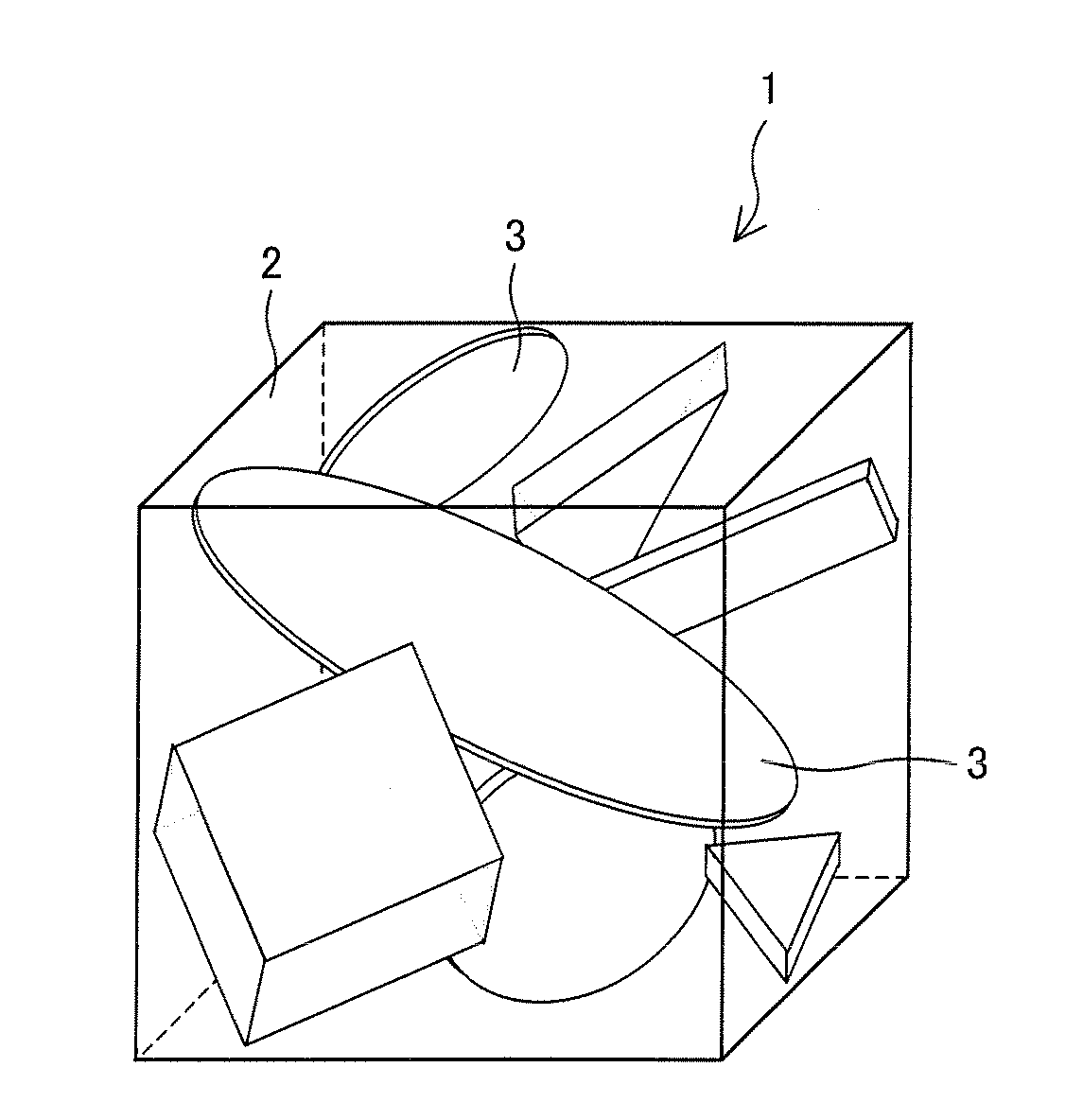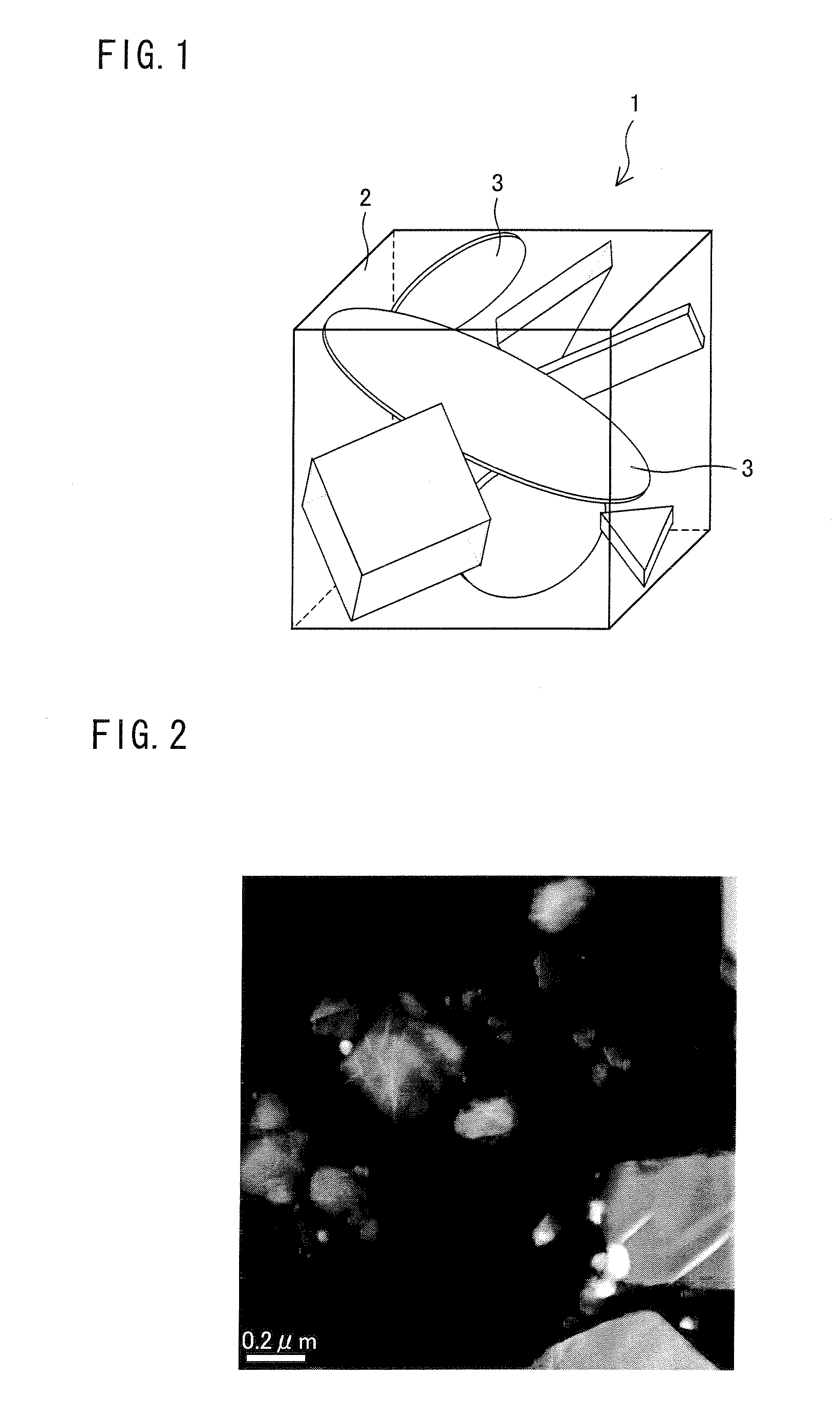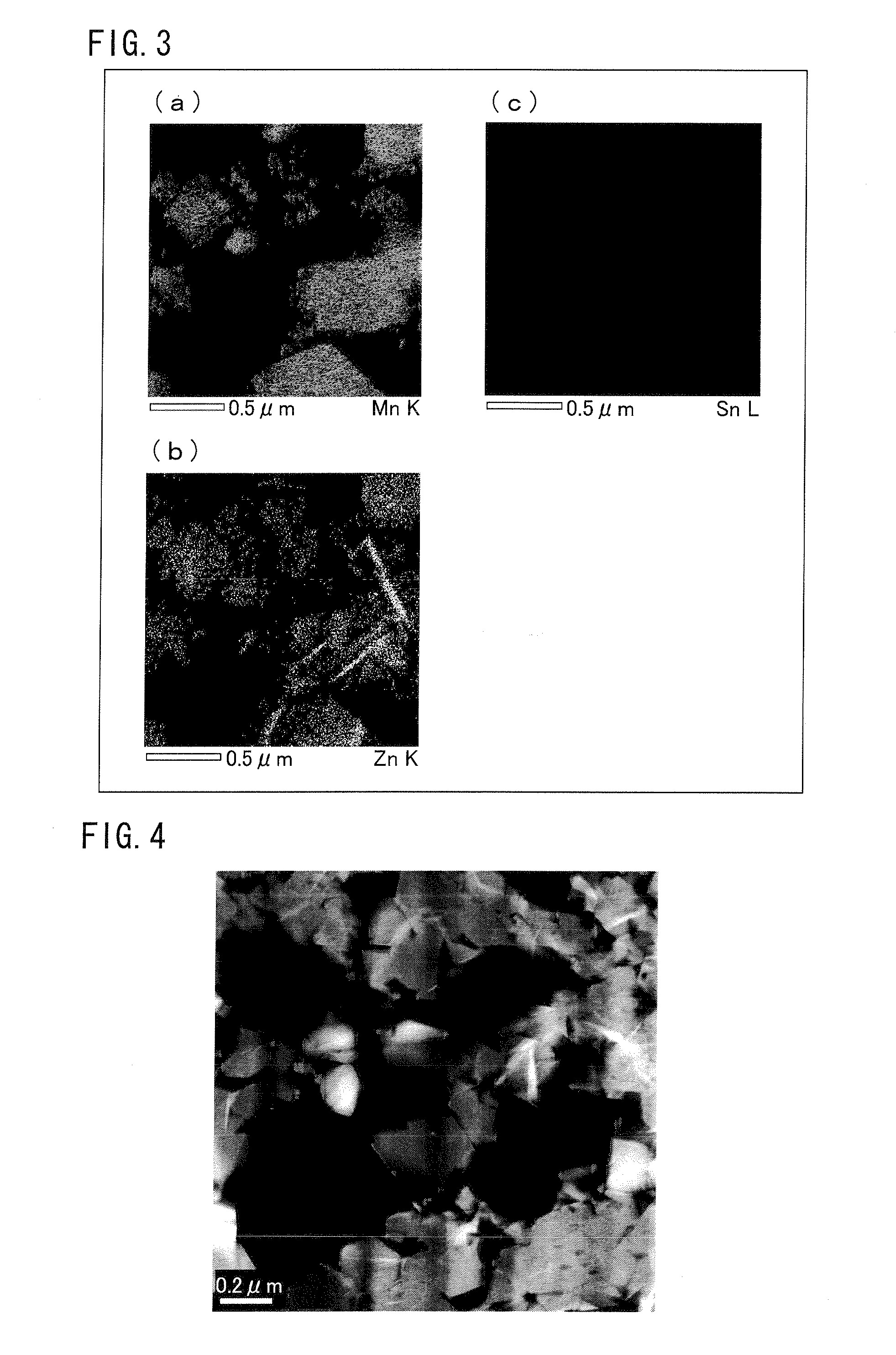Cathode active material, and nonaqueous secondary battery having cathode including cathode active material
a secondary battery and active material technology, applied in the direction of non-aqueous electrolyte accumulator electrodes, cell components, electrical apparatus, etc., can solve the problem of reducing the capacity of the battery, and achieve the effect of improving the cycle characteristics and reducing the capacity of the discharge battery
- Summary
- Abstract
- Description
- Claims
- Application Information
AI Technical Summary
Benefits of technology
Problems solved by technology
Method used
Image
Examples
example 1
[0143]Zinc oxide was used as zinc source material, and tin (IV) oxide was used as tin source material; these materials were weighed so that a molar ratio of zinc to tin was 2:1. Thereafter, these material were mixed for 5 hours with an automated mortar. Further, the mixed material was baked under air atmosphere for 12 hours at 1000° C., thereby obtaining a baked product. After the baking, the obtained baked product was crushed and thereafter mixed for 5 hours with the automated mortar. This produced a spinel-type compound.
[0144]As lithium source material and manganese source material included in the lithium-containing oxide, lithium carbonate and electrolytic manganese dioxide were used, respectively; these materials were weighed so that a molar ratio of lithium to manganese was 1:2. Furthermore, the spinel-type compound was weighed so that the spinel-type compound and the main crystalline phase satisfies x=0.05 in the general formula A. The lithium carbonate, electrolytic manganese...
example 2
[0150]A synthesis similar to Example 1 was carried out, except that the starting material was changed in mixing ratio so that the spinel-type compound and the main crystalline phase satisfied x=0.10 in the general formula A. A bipolar cell was produced in the same method as Example 1. Results of the operating cycle test are shown in Tables 1 and 2.
[0151]Moreover, a sample for STEM-EDX analysis was obtained by the same method as Example 1. Thereafter, a HAADF-STEM image was photographed in the same method as Example 1. This image is shown in FIG. 4. Furthermore, an EDX-element map obtained by the same method as Example 1 is shown in FIG. 5. Similarly with Example 1, it was observed from FIGS. 4 and 5 that the spinel-type compound is formed as having a layer shape in the main crystalline phase of the cathode active material obtained in Example 2.
example 3
[0152]A synthesis similar to Example 1 was carried out, except that the starting material was changed in mixing ratio so that the spinel-type compound and the main crystalline phase satisfied an equation of x=0.02. A bipolar cell was produced as in the same method as Example 1. Results of the operating cycle are shown in Tables 1 and 2.
PUM
| Property | Measurement | Unit |
|---|---|---|
| thickness | aaaaa | aaaaa |
| thickness | aaaaa | aaaaa |
| elementary composition | aaaaa | aaaaa |
Abstract
Description
Claims
Application Information
 Login to View More
Login to View More - R&D
- Intellectual Property
- Life Sciences
- Materials
- Tech Scout
- Unparalleled Data Quality
- Higher Quality Content
- 60% Fewer Hallucinations
Browse by: Latest US Patents, China's latest patents, Technical Efficacy Thesaurus, Application Domain, Technology Topic, Popular Technical Reports.
© 2025 PatSnap. All rights reserved.Legal|Privacy policy|Modern Slavery Act Transparency Statement|Sitemap|About US| Contact US: help@patsnap.com



